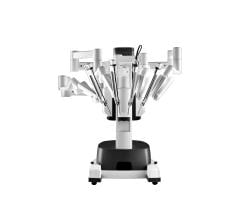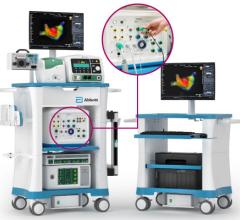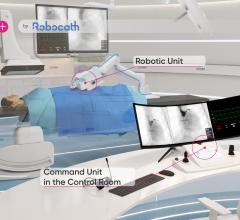
November 1, 2011 – Corindus Vascular Robotics said leading experts in interventional cardiology will speak about their clinical experience using the CorPath 200 System at a symposium co-sponsored by Corindus Vascular Robotics and Philips Healthcare. The event, entitled "Robotic-Assisted PCI, User Experience in Daily Practice," will take place at 7 a.m Thursday, Nov. 10, 2011 at the Moscone Center, Room 112 at the Transcatheter Cardiovascular Therapeutics (TCT) annual meeting.
Moderated by Peter J. Fitzgerald, M.D., and Joseph P. Carrozza Jr., M.D., the symposium will include presentations on the benefits robotic-assisted percutaneous coronary intervention (PCI) procedures, followed by roundtable discussion. Presentations include:
• "How Cardiovascular Robotics is changing PCI," Jeffrey W. Moses, M.D.
• "Overview of the CorPath 200 System and the PRECISE Trial," Giora Weisz, M.D.
• "High-Volume Operator Experience with Robotic-Assisted PCI," D. Christopher Metzger, M.D.
• "Integrating the CorPath 200 System into the Cath Lab Workflow," Ronald Caputo, M.D.
• "Beyond PCI - Robotics for Structural Heart Disease Procedures," Peter J. Fitzgerald, M.D.
"As the current practice of interventional cardiology evolves into more complex procedures, there is a need for improved safety and efficiency in the catheterization laboratory," said Carrozza, chief of cardiovascular medicine at St. Elizabeth's Medical Center, Boston, Mass. "The CorPath 200 System has the potential to improve the standard-of-care for PCI as well as future applications such as structural heart, peripheral and neurology procedures."
According to recent data published in the Catheterization and Cardiovascular Intervention journal, an interventional cardiologist's daily exposure to radiation and the physical stresses inherent in the cath lab can lead to occupational health risks including orthopedic problems, cataracts and cancer. The CorPath 200 System allows for controlled robotic-assisted placement of coronary guidewires and stent/balloon catheters from an ergonomically optimized interventional cockpit. The lead-lined cockpit protects the operator from radiation exposure. The comfortable seated position in front of the "slaved" monitors provides enhanced visualization of the angiography screen while reducing fatigue and minimizes head, neck and back strain.
"When introducing new technology into the cath lab, simplicity is best. The CorPath System is easy to use and fits nicely into the lab with minimum learning curve for the staff and me," said Ron Caputo, M.D., FACC, FSCAI, director of cardiac services and cardiology research at St. Joseph's Hospital Health Center in Syracuse, N.Y. "The joysticks are positioned in front of monitors, allowing me to focus on the patient's physiology, while the lead lined cockpit allows me to safely perform PCI procedures without wearing a heavy lead apron."
Corindus Vascular Robotic activities at TCT 2011 include:
• Giora Weisz, M.D., will host a discussion: "Corindus Robotic-Assisted Angioplasty: Current Status and Distant Vision" at 1:22 p.m. Monday, Nov. 7, 2011, in room 134.
• Corindus Vascular Robotics will host hands-on demonstrations of the CorPath 200 System CorPath 200 system hands-on demonstration at TCT exhibit hall booth 2209. To reserve your booth presentation of the CorPath 200 System, please call 508.653.3335 x200 or e-mail TCT2011@corindus.com.
• On Thursday, Nov.. 10, Corindus and Philips Healthcare will host the CorPath Symposium. To register for the breakfast symposium, please visit: www.tctconference.com/satelliteprograms.
For more information: www.corindus.com
NOTE: The CorPath 200 System is an investigational device and limited by federal law to investigational use only.

 June 11, 2024
June 11, 2024 








